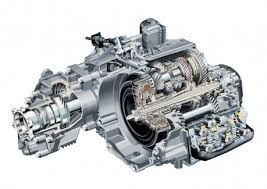Mobile:+86-311-808-126-83
Email:info@ydcastings.com
Understanding the Process of Manufacturing Cast Iron Castings for Various Applications
The Cast Iron Casting Manufacturing Process
Cast iron has been a vital material in various engineering applications due to its excellent casting properties, machinability, and wear resistance. The manufacturing process of cast iron casting involves several steps, each crucial for producing high-quality outcomes suited for automotive, machinery, and domestic uses. This article outlines the primary stages of the cast iron casting process while highlighting its significance in modern industry.
1. Material Selection
The first step in the cast iron casting manufacturing process is selecting the appropriate type of cast iron. The most common types include gray iron, ductile (or spheroidal) iron, white iron, and malleable iron. Gray iron contains graphite flakes, providing excellent machinability and thermal conductivity, making it suitable for engine blocks and various mechanical components. In contrast, ductile iron features nodular graphite, which enhances its ductility and strength, ideal for applications requiring toughness.
2. Pattern Making
The next step involves creating patterns that will form the mold cavity into which the molten cast iron will be poured. Patterns can be made from various materials, with wood, metal, and plastic being the most common. The design of the pattern must consider shrinkage and changes in volume during the cooling process. Patterns are typically made slightly larger than the final product to account for this shrinkage.
3. Mold Preparation
Once the patterns are ready, the molding process begins. This involves creating molds from sand, which is often mixed with a binding agent and water to enhance strength. The mold consists of two parts the cope (top) and the drag (bottom). The pattern is first placed in the drag, coated with a release agent to facilitate the removal after casting, and then sand is packed around it. The cope is aligned and placed on top, completing the mold. Proper venting and gating systems are incorporated to allow gases to escape during pouring and to direct the flow of molten iron.
After the molds are prepared, the next phase is melting the cast iron. This is typically achieved in induction furnaces, cupola furnaces, or electric arc furnaces. The selected charge materials, including scrap iron and alloying elements, are heated to a temperature around 1400 to 1550 degrees Celsius. Once the iron is fully melted, it is analyzed for chemical composition, ensuring it meets desired standards before proceeding to pouring.
cast iron casting manufacturing process

5. Pouring the Molten Iron
The molten iron is then poured into the prepared molds through the gating system. This step requires careful temperature control and speed to prevent defects like gas traps or cold shuts. Factors such as pouring temperature, speed, and the design of the gating system play critical roles in the overall quality of the casting.
6. Cooling and Solidification
After pouring, the molten iron begins to cool and solidify within the mold. The cooling time varies depending on the thickness of the casting and the mold's material. During this phase, the structure of the cast iron begins to form, with the cooling rate influencing the final mechanical properties of the cast product. Controlled cooling can minimize stresses and prevent cracking.
7. Mold Removal and Cleaning
Once the castings are fully solidified, the molds are broken apart to reveal the cast parts. The sand from the molds is usually reusable, making this process economically favorable. However, removing any sand residues, gates, or risers from the casting is essential for ensuring a clean final product.
8. Finishing Operations
Finally, the castings undergo various finishing operations such as machining, grinding, and surface treatment to achieve precise dimensions and surface finishes. The final inspection ensures that the cast components meet stringent quality standards required for their intended applications.
Conclusion
The cast iron casting manufacturing process is a well-structured method that integrates various disciplines of engineering and materials science. Understanding each step from material selection to finishing operations is essential for producing superior cast iron components. With advancements in technology, the efficiency and quality of cast iron casting continue to improve, maintaining its critical role in various industrial applications.
-
Why Should You Invest in Superior Pump Castings for Your Equipment?NewsJun.09,2025
-
Unlock Performance Potential with Stainless Impellers and Aluminum End CapsNewsJun.09,2025
-
Revolutionize Your Machinery with Superior Cast Iron and Aluminum ComponentsNewsJun.09,2025
-
Revolutionize Fluid Dynamics with Premium Pump ComponentsNewsJun.09,2025
-
Optimizing Industrial Systems with Essential Valve ComponentsNewsJun.09,2025
-
Elevate Grid Efficiency with High-Precision Power CastingsNewsJun.09,2025











